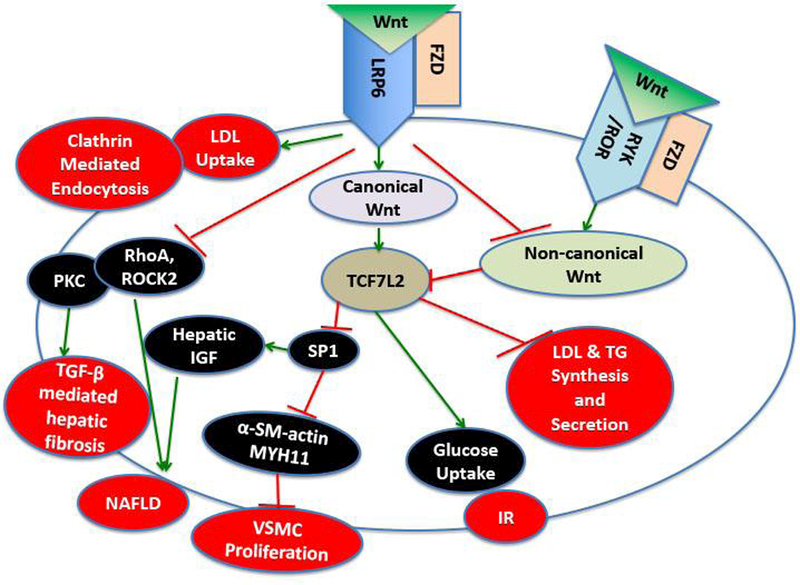Figure 1.

Schematic summary of the Wnt signaling derangements and the different traits of metabolic syndrome. The canonical Wnt pathway is activated when Wnt ligand binds to the Frizzeled (FZD) receptor and the LRP6 co-receptor, this in turn activates LDL uptake through Clathrin mediated endocytosis. Canonical Wnt also activates TCF7L2 transcription factor that inhibits LDL and triglyceride (TG) synthesis and excretion. In addition, TCF7L2 leads to increased glucose uptake via the insulin receptor (IR) and inhibition of vascular smooth muscle cell (VSMC) proliferation, and inhibition non-alcoholic fatty liver disease (NAFLD) via inhibiting hepatic insulin growth factor (IGF) expression. Activation of the canonical Wnt pathway reduces NAFLD and hepatic fibrosis also via inhibition of TGF-β. Interestingly the canonical and non-canonical Wnt pathways reciprocally inhibit each other. Non-canonical Wnt is activated via binding of Wnt ligand to the FZD receptor and RYK/ROR co-receptor.
